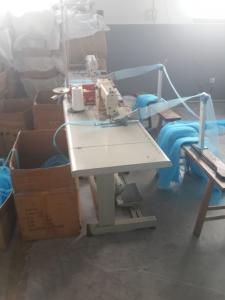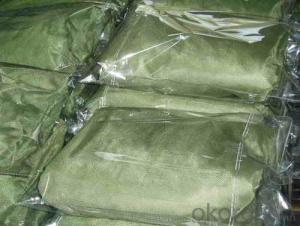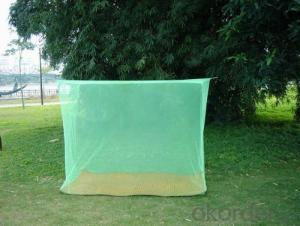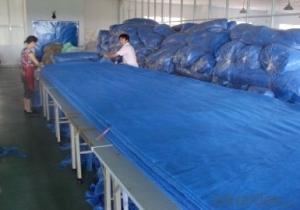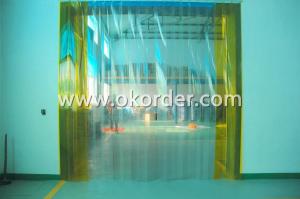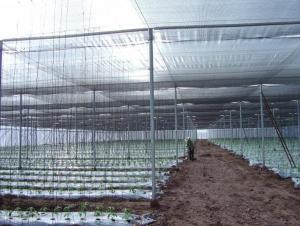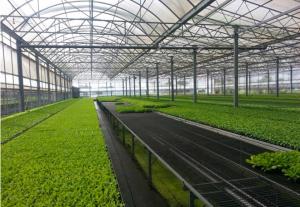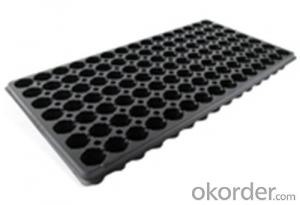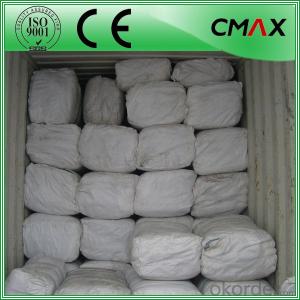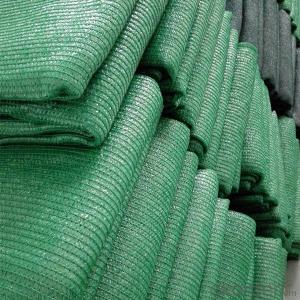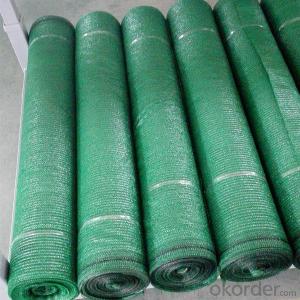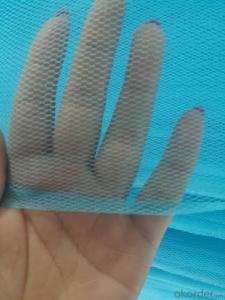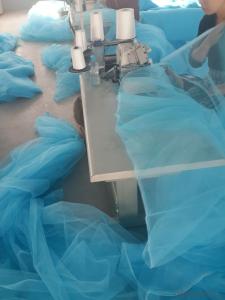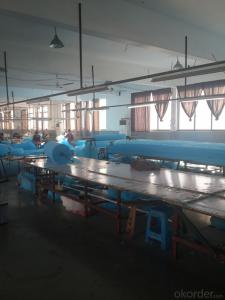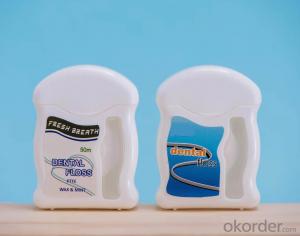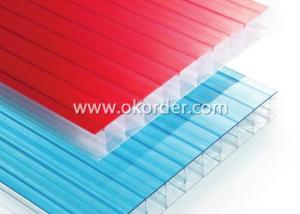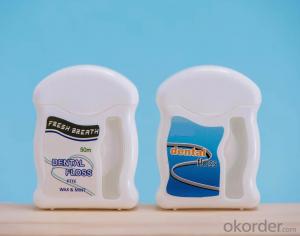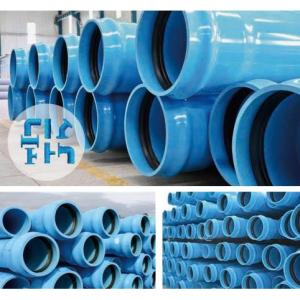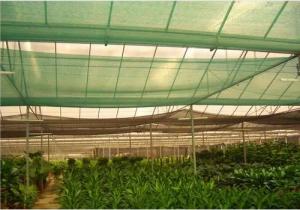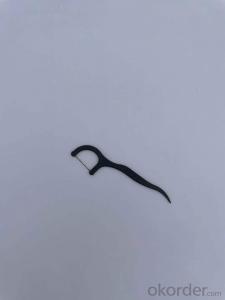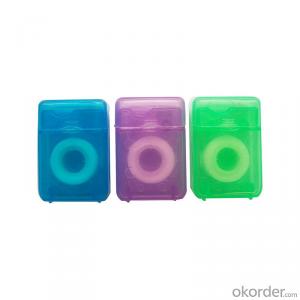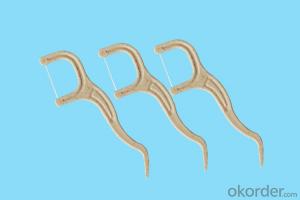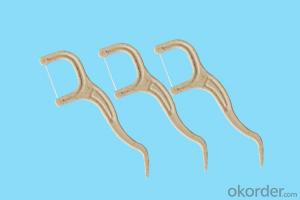Polyethylene Long Lasting Insecticide Treated Mosquito Nets
- Loading Port:
- Shanghai
- Payment Terms:
- TT OR LC
- Min Order Qty:
- 1000 PCS
- Supply Capability:
- 1000000 PCS/month
OKorder Service Pledge
OKorder Financial Service
You Might Also Like
Introduction of Mosquito Net
This long lasting mosquito bed net is hooked on the ceiling and tucked under your mattress for overnight protection from bites. The deltamethrin treatment provides 4-5 years of protection, unlike permathrin which only lasts about 1 year. Insecticide treated mosquito nets, if used properly, are one of the best ways to prevent mosquitoes from biting and infecting individuals with malaria and other mosquito-borne diseases.
Details of Mosquito Net :
Lasts 4-5 years
Suitable for beds of all dimensions
For one or two people
Attaches to ceiling
Can be suspended from a ceiling
Pre-treated as per World Health Organization guidelines
Services of Mosquito Net :
Pre-sale services:
1.Various kinds of mosquito nets to choose from.
2.Any customized products can be satisfied according to your requirements.
3.Professional technicians engaged in each procedures.
Services during the sale:
1.Pre-checking and safeguarding products before delivery.
2.Providing solutions for any unexpected conditions involved.
After-sale services:
1.Assist customers on how to hang the exact mosquito nets.
2.Provided with instructions or vidoes of certain mosquito nets foldings.
3.24-hour Services.Contact us for any questions, we'd be gladly to follow.
Packaging & Delivery of Mosquito Net :
| Packaging Detail: | Individually packed into branded plastic bag,100 units per bale. |
| Delivery Detail: | 2 weeks after confirm order and payment |
FAQ of Mosquito Net:
1.Sample
We'd be gladly to send you the sample for free, but you need to pay for transport cost, and we will turn back this amount of money to you after orders issued.
2. MOQ
Our minimum order quantity for mosquito net is 1,000 pieces, and 500 kilograms for fleece fabric and mosquito net fabric.
3.Color, Size
Any color and any size is available as long as it's connected with mosquito nets.

- Q:What are the advancements in biocompatible medical plastic coatings?
- Advancements in biocompatible medical plastic coatings include the development of new materials with enhanced biocompatibility, improved durability, and increased resistance to bacterial growth. These coatings are now capable of providing a smoother surface finish, reducing friction and wear, and promoting better integration with surrounding tissues. Additionally, advancements in the application techniques and processes have led to more precise and uniform coatings, ensuring better performance and longer lifespan for medical devices and implants.
- Q:How are medical plastics used in ophthalmic applications?
- Medical plastics are used in ophthalmic applications for various purposes such as manufacturing contact lenses, intraocular lenses, and surgical instruments. These plastics are biocompatible, lightweight, and have excellent optical properties, making them suitable for creating high-quality products that enhance vision and treat eye conditions. Additionally, medical plastics can be customized to meet specific patient needs, ensuring a comfortable and effective ophthalmic experience.
- Q:What are the considerations for using medical plastic in microfluidics?
- There are several important considerations when using medical plastic in microfluidics. Firstly, the material must be biocompatible to ensure it does not elicit any adverse reactions when in contact with biological samples or tissues. It should also possess good optical clarity to allow for easy visualization and analysis of the microfluidic system. Additionally, the plastic should exhibit low surface roughness to minimize the risk of sample contamination or blockages. Other factors to consider include the chemical resistance of the plastic to ensure compatibility with various reagents and solvents used in microfluidic experiments, as well as its mechanical properties to ensure it can withstand the required pressure and manipulation.
- Q:Can medical plastic be safely used in respiratory devices?
- Yes, medical plastic can be safely used in respiratory devices. Medical-grade plastics are specifically designed to be biocompatible and meet stringent safety standards. They are resistant to bacteria and other contaminants, durable, and non-toxic, making them suitable for use in respiratory devices such as masks, tubing, and oxygen concentrators.
- Q:What are the considerations for sterilizing reusable medical plastic products?
- When sterilizing reusable medical plastic products, several considerations must be taken into account. Firstly, the compatibility of the sterilization method with the specific plastic material used in the product is crucial. Some plastics may not withstand certain sterilization techniques, leading to product degradation or failure. Secondly, the effectiveness of the sterilization method in eliminating pathogens and achieving the desired level of sterility is essential. Different sterilization techniques, such as steam autoclaving, ethylene oxide gas, hydrogen peroxide plasma, or gamma irradiation, have varying degrees of efficacy and should be selected based on the intended use of the product. Thirdly, the impact of sterilization on the physical and mechanical properties of the plastic product should be evaluated. Sterilization processes can affect the integrity, dimensional stability, and mechanical strength of plastics, potentially rendering them unfit for use. Furthermore, consideration should be given to the regulatory requirements and guidelines applicable to the specific medical device or product. Regulatory bodies often provide specific instructions and standards related to sterilization methods, validation, and packaging requirements that must be followed. Lastly, the cost-effectiveness and practicality of the chosen sterilization method should be assessed. Factors such as equipment availability, turnaround time, and the ability to maintain sterility during storage and transportation should be considered to ensure a safe and efficient sterilization process for reusable medical plastic products.
- Q:Potassium Permanganate can use disposable plastic gloves
- Because the rubber gloves will be Potassium Permanganate corrosion, in the middle of the textbooks we know that strong pH is highly corrosive, and rubber gloves are made of rubber, which belongs to the high molecular structure of aromatic hydrocarbon saturation, corrosion will produce a chemical reaction.
- Q:How does medical plastic contribute to the development of bioengineering tools?
- Medical plastic plays a crucial role in the development of bioengineering tools by providing the necessary materials that are biocompatible, sterile, and durable. It allows for the fabrication of various medical devices and implants, such as catheters, prosthetics, surgical instruments, and drug delivery systems. The versatility of medical plastic enables precise engineering and customization, facilitating the advancement of bioengineering tools for improved patient care, diagnostics, and treatment options.
- Q:What are the considerations for selecting the right medical plastic for a specific application?
- When selecting the right medical plastic for a specific application, there are several important considerations to keep in mind. Firstly, the biocompatibility of the plastic is crucial to ensure it is safe for use within the human body. It should be non-toxic and not cause any adverse reactions or interactions with bodily tissues or fluids. Another consideration is the mechanical properties of the plastic, such as its strength, flexibility, and durability. Depending on the application, the plastic may need to withstand certain forces or conditions, so choosing a material with suitable mechanical properties is essential. Chemical resistance is also an important factor to consider. Medical plastics should be resistant to various chemicals, including disinfectants, cleaning agents, and bodily fluids, to maintain their integrity and prevent degradation over time. Furthermore, the sterilization methods that will be used should be taken into account. Some plastics may not withstand certain sterilization techniques, so selecting a plastic that can withstand the intended sterilization method is crucial. Cost is another consideration, as it can vary depending on the type of plastic and the manufacturing process. However, it should never compromise the quality and safety of the medical device or application. Lastly, regulatory compliance is vital. The selected plastic should meet the necessary regulatory standards and guidelines for medical devices to ensure it is legal and safe to be used in a medical setting. Considering all these factors will help in selecting the right medical plastic that ensures both the safety and effectiveness of the specific application.
- Q:What safety regulations apply to medical plastic?
- Safety regulations that apply to medical plastics include requirements for biocompatibility, sterilization compatibility, chemical resistance, and non-toxicity. These regulations ensure that medical plastics used in healthcare settings meet strict standards and do not pose any harm to patients or healthcare professionals.
- Q:Can medical plastics be reused or repurposed?
- No, medical plastics cannot be reused or repurposed due to concerns of contamination and potential transmission of diseases.
1. Manufacturer Overview |
|
|---|---|
| Location | |
| Year Established | |
| Annual Output Value | |
| Main Markets | |
| Company Certifications | |
2. Manufacturer Certificates |
|
|---|---|
| a) Certification Name | |
| Range | |
| Reference | |
| Validity Period | |
3. Manufacturer Capability |
|
|---|---|
| a)Trade Capacity | |
| Nearest Port | |
| Export Percentage | |
| No.of Employees in Trade Department | |
| Language Spoken: | |
| b)Factory Information | |
| Factory Size: | |
| No. of Production Lines | |
| Contract Manufacturing | |
| Product Price Range | |
Send your message to us
Polyethylene Long Lasting Insecticide Treated Mosquito Nets
- Loading Port:
- Shanghai
- Payment Terms:
- TT OR LC
- Min Order Qty:
- 1000 PCS
- Supply Capability:
- 1000000 PCS/month
OKorder Service Pledge
OKorder Financial Service
Similar products
New products
Hot products
Related keywords
